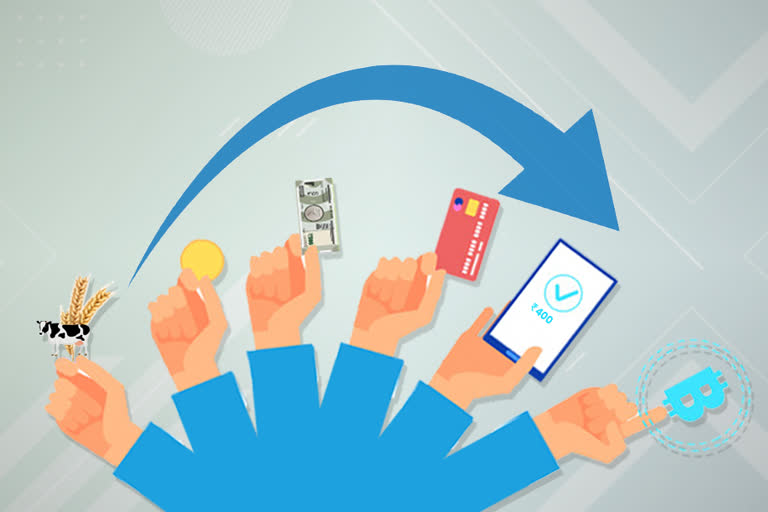Hyderabad: Whoever has said money can’t buy happiness might not have seen the varied ways we use it to buy our self-proclaimed happiness. Visiting a beauty salon or grocery shop or even darshan to a place of worship is impossible without this piece of paper or without the plastic money.
However, the way we use money has undergone several alterations. From barter system and gold coins to paper notes and now digital methods- the evolution in payment methods is varied and intriguing.
Barter System
Let’s talk about the barter system. Before currencies came into existence, people used to exchange goods and commodities to get what they needed. But the challenge that cropped up with the barter system was perceived inequalities in the value of the exchanged goods.
For example, one could not exchange a goat to get a handful of rice or pulses. This paved way for the need for some other common mode of exchange.
Metals
In the 6th century BC, India witnessed its first coins made up of either gold, silver or copper with fixed weight and value and bearing an official seal representing the government who issued them.
However, it was Sher Shah Suri who first introduced a new currency, which is the predecessor of the modern-day Rupee. He had set up a new civic and military administration that issued a silver coin termed as the Rupiya.
Paper Notes
Thereafter, between the year 1770-1832, Bank of Hindostan (1770– 1832), General Bank of Bengal and Bihar (1773–75), and Bengal Bank (1784–91) issued paper currencies.
